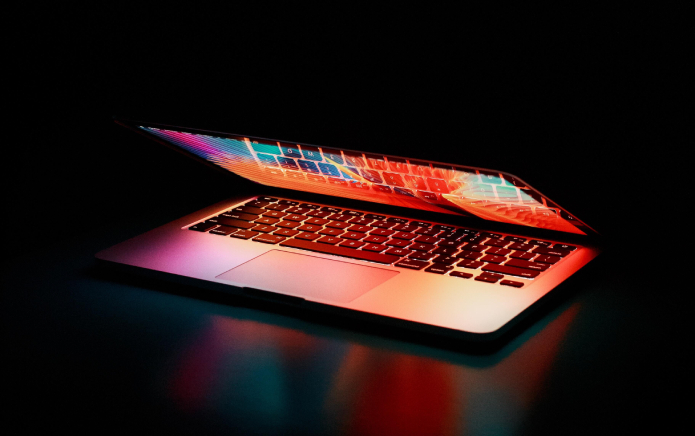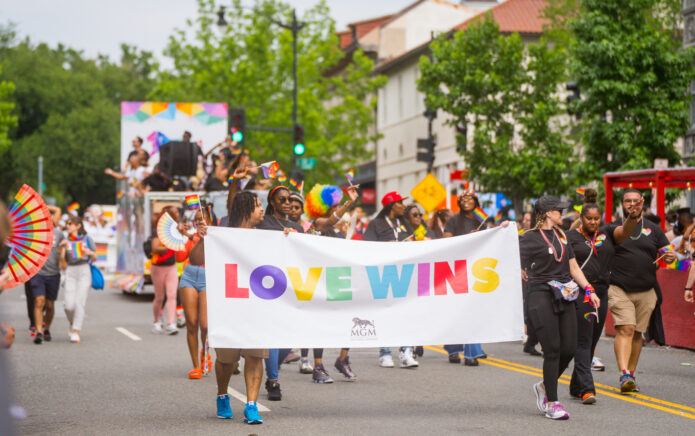
With many LGBTQ+, and specifically trans people, having 24/7 access to digital spaces that feature scrolling news of anti-trans legislation being passed – as well as the added potential of personal prejudice being directed at them through comments and DMs – curiosity can get the better of us wanting to know what is being said about us personally, or our community, despite the psychological harm it can cause.
A growing awareness of this behaviour in LGBTQ+ people has been highlighted by the LGBT Foundation as digital self-harm. Here at GAY TIMES, we want to unpack what it looks like, where it comes from and how you can help yourselves and those around you to look after your mental wellbeing online.
What is digital self-harm?
The spotlight being placed on digital self-harm is something many people are grateful for, as young people’s access to digital spaces increases year on year. Ofcom shared in a recent report that 99% of 16-24 year olds use the internet at home, meaning that nearly all in that demographic have access to digital and social media where anti-LGBTQ+ narratives are rife.
The act of digital self-harm can be categorised in many ways – as well as being different to other forms of self-harm – because often, people who are digitally self-harming might not start out by meaning to do so.
Simply put, digital self-harm is the idea that, despite its psychological consequences and impact on our mental health, we would still engage with hateful or abusive content online. This behaviour then becomes repetitive, and its impact on our wellbeing even greater. This can include being unable to stop reacting to anti-LGBTQ+ discussion, sending ourselves hate or seeking out anti-LGBTQ+ conversations.
Are there different types of digital self-harm?
There are lots of different ways in which our actions online can become harmful to ourselves, and it’s important that we keep a check on our own digital screen time, as well as our intentions behind engaging with abusive or harmful content.
The LGBT Foundation identifies that there are three main ways digital self-harm can manifest.
LGBTQ+ Phobic Content Checking
This is the act of needing to check social media, websites or blogs that are known to be producing anti-LGBTQ+ content. This is something people often justify to themselves, citing that they want to make the community aware of any planned attacks. Alternatively it could be to alert other people within the community of famous faces or known figures who are saying anti-LGBTQ+ things.
Conflict Seeking
One that many of us may find on platforms such as Twitter and Reddit, is conflict seeking. This is when someone searches for people online that are known to hold views that vehemently go against their own views with the desire and objective to debate these issues. This is often with the intention of changing another person’s mind, or for sticking up for other people online who may be being targeted. This can become harmful to the individual because the person they are debating is often likely to argue back.
Self Cyberbullying
Self cyberbullying is when someone sends hateful or abusive messages to their own social media accounts in order to make it look like other people are sending them harmful messages. These accounts are often fake or randomised accounts that can be made up people or based on real people.
It’s important to note that although this behaviour may sound confusing at first, its origins are not manipulative or to deceive.
Why do people do this?
Many people who engage in digital self-harm don’t realise that they’re doing it. Lots of LGBTQ+ people don’t seek out conflict or engage with anti-LGBTQ+ news with a desire to harm themselves. But this repeated behaviour over time can become something that we end up falling into a rhythm with. It then becomes commonplace to check social media every day, despite its harmful conversations around transness or queerness.
We end up thinking that what we are seeing is normal, and this can lead to internalising anti-LGBTQ+ beliefs or projecting those beliefs onto ourselves and those around us. It affects our mood, our energy levels, our relationships and ultimately our own mental health. It can mean that many LGBTQ+ people feel shameful about their own identity.
As mentioned above, this has the potential to then become something we can’t stop.
The LGBT Foundation shares that young people engaging in this behaviour are often embarrassed, frightened or unsure where to ask for help as they can feel alone in this challenge. Equally, because this news and behaviour is so commonplace amongst people online, it can seem like there isn’t a problem because ‘everyone is doing it’.
Again, it’s important to recognise here that although many of us do engage with anti-LGBTQ+ content online, we aren’t all digitally self-harming by looking at it. A sad reality for LGBTQ+ people is that we will encounter a lot of anti-LGBTQ+ material in our daily lives. The act of digital self-harm is when engaging with this material turns into an act that is hard to stop, or leads to you seeking out places where you know conflict may lie, or sending yourself harmful messages.
What to look out for?
Whether it be amongst your peers or yourself, here are some things to look out for:
Time Blindness – Are you surprised by how much time has passed while you were doing these things? Do you find that you don’t have time left to do other things?
Repetition – Do you do these things every day or every week? Do you ever find that you end up doing these things without thinking about it?
Justifying what you are doing to yourself – Are you coming up with reasons why you did these things afterwards? Do you feel worried when you think about your reasons?
Feelings in your body – When you know you’re about to send yourself messages, look at anti-LGBTQ+ content or have an online argument, do you feel your heart pounding, your hands shaking, an increase in sweating or a feeling like you need to fight or run away?
These are just a few of the important signs that you or another person may be digital self-harming.
How can I get help?
Seeking help for our mental health can be the hardest yet most rewarding thing we can do for ourselves. Opening up about our challenges with digital self-harm or the impact that living in a world that is still prejudiced towards LGBTQ+ people can help us to overcome the desire to engage in self-harming behaviours.
There are actions that we can take in our day-to-day lives to help ourselves handle feelings of wanting to digitally self-harm. These include:
Noticing feelings in your body – This can be acknowledging triggers that may feel and look physical in your body, including sweating, shaking or trembling, hearing your own heartbeat or having butterflies in your stomach. It can also be important to notice if you feel tense, or ‘spaced out’ like you are not really present or here.
Boundaries with screen time – Although this can be difficult for those who seek their community online, setting boundaries with your screen time can mean that you’re less likely to be engaging with anti-LGBTQ+ content during the day. Whether this be not using certain apps or websites, or only visiting those sites during specific times of the day, setting boundaries with your technology can be a great first step in putting down the harmful behaviours of digital self-harm.
Other incredibly useful tips that can help you stop acting out include journaling and speaking with friends about how you’re feeling. Often, sharing our stresses of the day or what is on our minds can help us to let go of feelings of sadness, resentment or frustration. This, in turn, can prevent us from acting out digitally as we feel we have been able to share how we feel. This process of unburdening ourselves with feelings of sadness or worry doesn’t always have to be with another person, it can be through journaling or other creative ways that you can express yourself.
It’s OK to feel overwhelmed by the state of the world, and all of the issues that LGBTQ+ people have to face. It’s hard, and no matter how old you are, it can become something that feels like a weight. Many of us find ways of seeking release, freedom and peace, and these can, in turn, turn into compulsive behaviours that we can’t stop. Whether it be alcohol, drugs, food, sex, there are lots of behaviours that people struggle with keeping healthy. That’s OK.
It’s also important to remember that it’s not your fault. You’re just trying to keep going and protect yourself from often scary and uncomfortable feelings by acting out digitally. That’s why resources like The LGBT Foundation are so important. They help LGBTQ+ people of all ages seek help.
Social media can be a busy and loud space, so it’s OK to step back and put your phone down if you’re being harmed by what you’re seeing. Your wellbeing is paramount here, and the rest of the LGBTQ+ community will be there alongside you to support you every step of the way.
If you, or anyone you know needs resources or assistance on digital self-harm check out the LGBT+ Foundation Guide here.
If you or someone you know needs help with their mental health, find support at Young Minds



